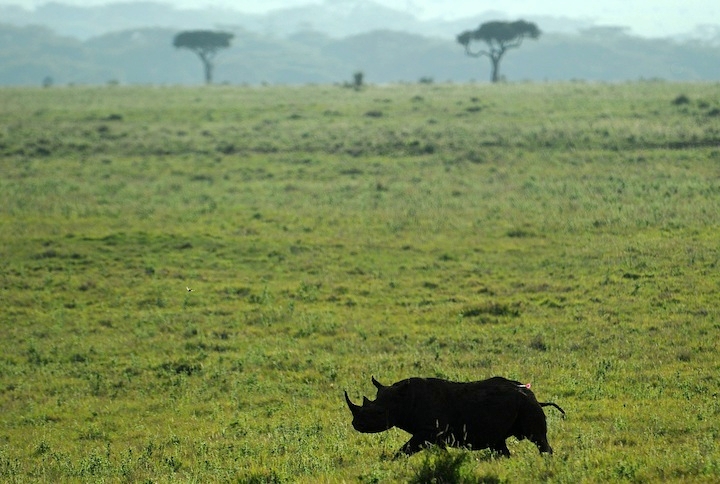Laikipia, Kenya
For weeks the farm has been in the eye of a storm, with violence swirling all around us in clouds of dust kicked up by multitudes of cattle. Last week to the west, tribal invaders burned down Kuki Gallmann’s tourist lodge overlooking the Mukutan Gorge. On Sosian ranch to the south our neighbours are bravely pushing on a month after the invaders murdered Tristan and burned down several homes. To the east on Suyian ranch, Anne’s safari lodge — the loveliest camp I ever saw in Laikipia — also lies in ashes. To the north invaders are still poaching elephant, as they are everywhere around us, spraying bullets into their legs and then hacking out the tusks. Since they wandered off with their herds before Christmas, the invaders have still not returned to our place. This might be because we were left with no grass and little water. It is dead quiet now. Walking through the bush at noon, I hear only my own breathing and footsteps, which kick up little explosions of dust. No birdsong, no wind. The landscape’s colours are those you see in the images Nasa spacecraft transmit from Mars, reddish and with stark light and shadow. There is no pasture left and the animals are dying. In the valley our fever trees stand like vandalised umbrellas, their branches collapsed on all sides from starving elephant that smash them down in their desperation for anything to suck out of the bitter, yellow bark. On my path I find a waterbuck that must have collapsed only a few minutes before, its eyes still open as it dies. The invaders appear to have vanished, but I frequently see tracks in the dust — and sometimes figures scampering away through the bush. Beyond the farm’s perimeter fence I see vast herds of cattle, tens of thousands of them. I am anxious to know why they have not smashed down our fences again, as they did in October — and why they have not yet burned down the farmstead, the hay barn and offices. Perhaps they are just saving us until later. I question a Samburu friend about this and he says, ‘to us you are like a white bird’. I wearily ask what on earth he is talking about and after an esoteric conversation I finally deduce that he is comparing me to an Egyptian vulture. Supposedly, the Samburu avoid killing such creatures for fear of bringing curses down upon themselves. It is all very well being seen as an untouchable vulture, but at nightfall I am reminded that in recent years this has failed to protect me from being shot at, ambushed, pelted with rocks, spears, knobkerries and abuse. And it’s also not true that the Samburu avoid killing vultures, because this once abundant creature has all but vanished from our neck of the woods. And in the dark the fun begins. Around the farmstead itself is a high security electric fence with thousands of volts pulsing through it. I’ve seen a baboon climb over it — and I know a leopard got through it one night — but unless the wires are cut there is no way a human can breach the line without triggering loud alarms and flashing lights. The first alarm goes off at about 9 p.m. I go out with the fencing team until we find the cut wires, fix them and restore power. We have an askari defending the barn, where our last hay reserves are stored for the farm’s cattle. It’s just a matter of time before the invaders try to either steal it or burn the barn out of spite. At midnight the alarm goes off again. Wandering along the fence line in the dark with the team, the hairs on my neck stand up. People outside the fence are watching us and I wonder what arms they carry and if they will use them. The cut is found and fixed. At 2 a.m. the alarm sounds again — and then again at 4 a.m. After all the night fears, dawn in Kenya always lifts my spirits. First I hear the sand grouse, then the bustards winging their way towards the light, then the francolins. Briefly, I fancy there’s a dew before the sun comes up and like breath lifting from a knife the idea vanishes. After rampaging their way through half a million acres of Laikipia, some of Kenya’s best ranches and wildlife areas, the invaders’ cattle have started dying like the other animals. On a drive through the bush beyond the farm borders I cross invisible clouds of stench that are overwhelming. The starving cows first sit down and refuse to get up again. They stay there until they keel over. It’s happening to hundreds, and soon it will be thousands — and then the invasions will end and the rains will come at last. Aidan Hartley
Aidan Hartley
Wild life | 6 April 2017
Drought puts everything, every animal, every human in grave mortal danger

issue 08 April 2017





Comments